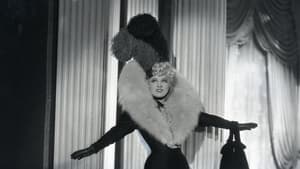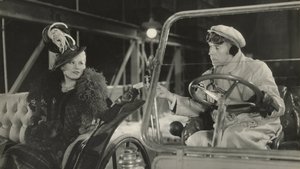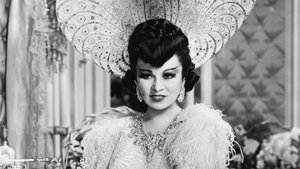Contact: info@alwanfilm.com
Video Sources 0 Views
- Watch trailer
- Every Day's a Holiday 1937 Colorized


Every Day’s a Holiday 1937 Colorized
Synopsis
Table of Contents
ToggleReview: Every Day’s a Holiday 1937 Colorized – A Journey Through Classic Comedy

Introduction
In the golden age of Hollywood, where musicals and comedies reigned supreme, few films captured the spirit of the era quite like Every Day’s a Holiday (1937). Directed by the talented A. Edward Sutherland and starring the inimitable Mae West, this film is a quintessential example of the lively and whimsical comedies that defined the 1930s. Set against the backdrop of a rapidly modernizing America, Every Day’s a Holiday offers a delightful escape into a world of wit, charm, and timeless humor. This article delves into the film’s enduring appeal, examining its significance in the broader context of Hollywood’s comedic landscape.
Check The Full Colorized Movies List
Check Our Colorized Movies Trailer Channel
Understanding Every Day’s a Holiday 1937 Colorized: Director, Cast, and Genre
Every Day’s a Holiday was directed by A. Edward Sutherland, a filmmaker known for his work in the comedy genre. Sutherland, who had a knack for light-hearted, fast-paced narratives, found the perfect vehicle for his directorial talents in this film. The movie is a showcase of Mae West’s larger-than-life persona and her unique brand of humor, which had already made her a Hollywood icon by the late 1930s.
Mae West, both the star and the screenwriter of Every Day’s a Holiday, plays the role of Peaches O’Day, a con artist with a heart of gold. West’s sharp wit and impeccable comedic timing are on full display, making Peaches one of her most memorable characters. The film also features a stellar supporting cast, including Edmund Lowe as the charming but bumbling Capt. McCarey, Charles Butterworth as the lovestruck mayoral candidate, and Walter Catlett as the scheming police chief. These actors, all seasoned in the art of comedy, complement West’s performance perfectly, adding layers of humor and intrigue to the story.
The genre of Every Day’s a Holiday is a blend of screwball comedy and musical, a combination that was particularly popular in the 1930s. The film is infused with the fast-paced dialogue, romantic entanglements, and slapstick humor that characterize screwball comedies, while also featuring musical numbers that showcase West’s talents as a performer. This hybrid genre allows the film to appeal to a broad audience, offering something for everyone, from quick-witted banter to catchy tunes.
Exploring the World of Every Day’s a Holiday 1937 Colorized: Plot and Characters
Every Day’s a Holiday transports viewers to the bustling streets of turn-of-the-century New York, where Peaches O’Day, a clever and resourceful con artist, operates. The film’s plot is a lively mix of schemes, romance, and comedic misunderstandings, all centered around Peaches’ attempts to outwit the corrupt authorities and make a better life for herself.
The story begins with Peaches selling tickets to a fake event, a scam that catches the attention of the local police. Undeterred, Peaches dons a disguise and reinvents herself as the glamorous and sophisticated French singer, Mademoiselle Fifi. Her charm quickly wins over the city’s elite, including the lovestruck Capt. McCarey, who becomes infatuated with her. As Peaches navigates the treacherous waters of New York society, she finds herself embroiled in a mayoral race, with her antics threatening to upend the city’s political landscape.
The characters in Every Day’s a Holiday are as colorful as the plot itself. Peaches O’Day is the quintessential Mae West heroine: bold, witty, and unafraid to use her charm to get what she wants. Capt. McCarey, played by Edmund Lowe, is a lovable rogue who provides the perfect foil to Peaches’ quick wit. Charles Butterworth’s portrayal of the bumbling mayoral candidate adds an additional layer of humor to the film, while Walter Catlett’s scheming police chief serves as the primary antagonist, constantly plotting to bring Peaches down. Together, these characters create a vibrant and entertaining world where anything can happen.
The Art of Film Colorization
Although Every Day’s a Holiday was originally filmed in black and white, the art of colorization has become an intriguing aspect of its legacy. Film colorization, the process of adding color to black and white footage, allows modern audiences to experience classic films in a new way. This technique has been the subject of much debate, as it raises questions about the preservation of original works versus the desire to make them more accessible and visually appealing to contemporary viewers.
The colorization process involves a meticulous and detailed approach, where each frame is carefully tinted and shaded to create a realistic color palette. For Every Day’s a Holiday, the colorization brings out the vibrancy of the film’s costumes, settings, and characters, adding a new dimension to the viewing experience. However, it’s essential to consider how this process impacts the film’s original aesthetic and whether it enhances or detracts from the overall narrative.
Early Colored Films: A Brief History
The journey of early colored films is a fascinating chapter in the history of cinema. Long before the advent of full-color films like The Wizard of Oz (1939), filmmakers experimented with various techniques to introduce color into their work. These methods included hand-painting individual frames, tinting, and toning. The desire to bring color to the screen was driven by the filmmakers’ ambition to create more immersive and visually striking experiences.
One of the earliest examples of color in film is Georges Méliès’ A Trip to the Moon (1902), which featured hand-colored scenes that added a fantastical element to the story. As technology advanced, processes like Technicolor began to emerge, offering more consistent and vibrant color reproduction. By the 1930s, color was becoming increasingly popular in Hollywood, with musicals and epic dramas often leading the charge in this new frontier of filmmaking.
While Every Day’s a Holiday was not initially produced in color, its later colorization reflects this ongoing fascination with the visual possibilities that color offers. The film’s lively energy and whimsical tone make it an ideal candidate for colorization, bringing to life the vibrancy of the world that Mae West and her co-stars inhabit.
Every Day’s a Holiday (1937) and Its Early Colored Version
The decision to colorize Every Day’s a Holiday has given this classic comedy a fresh lease on life, introducing it to a new generation of viewers who may not be as accustomed to black and white films. The colorized version offers a different experience, highlighting aspects of the film that might have been overlooked in its original form.
In the colorized version, the film’s settings and costumes come to life in a way that complements the film’s lively atmosphere. Mae West’s dazzling outfits, which were already a highlight in black and white, become even more striking in color, adding to her character’s allure and charisma. The bustling streets of New York, the lavish interiors, and the period details all benefit from the addition of color, making the film’s world feel more vibrant and dynamic.
However, it’s important to note that the colorization process can also alter the tone and mood of the original film. Black and white cinematography often relies on contrasts, shadows, and lighting to convey emotion and atmosphere. By adding color, these elements can be overshadowed or changed, potentially affecting the film’s impact. For purists, the original black and white version of Every Day’s a Holiday remains the definitive way to experience the film, preserving the artistic choices made by the filmmakers at the time.
The Debate Over Film Colorization
As with many aspects of film preservation and restoration, the colorization of black and white films like Every Day’s a Holiday is a topic of ongoing debate. On one side of the argument, proponents of colorization argue that it makes classic films more accessible to modern audiences, particularly younger viewers who may be less inclined to watch black and white movies. They also point out that colorization can highlight details and aspects of the film that might have been overlooked in the original version.
On the other side, critics of colorization argue that it compromises the artistic integrity of the original work. Black and white cinematography is a deliberate artistic choice, with filmmakers using the medium to create specific moods, contrasts, and visual styles. By adding color, they contend, these choices are overridden, potentially altering the viewer’s experience of the film. Additionally, there are concerns about the historical accuracy of colorization, as the added colors may not accurately reflect the time period or the filmmakers’ intentions.
Ultimately, the debate over film colorization is a reflection of broader discussions about the preservation and interpretation of classic films. It raises questions about how best to honor the original works while making them accessible to new audiences. For Every Day’s a Holiday, the colorized version offers a fresh perspective, but it also invites viewers to consider the film’s original black and white version as a testament to the artistic vision of its creators.
Examining Every Day’s a Holiday (1937) as an Early Colored Film
When viewed as an early colored film, Every Day’s a Holiday takes on a new dimension that highlights the evolution of cinematic technology and storytelling. The colorized version offers a glimpse into how the film might have looked if it had been produced in color originally, providing a bridge between the past and the present.
The addition of color to Every Day’s a Holiday enhances certain elements of the film, particularly its visual style and period details. The vibrant colors help to bring out the elaborate costumes, the bustling energy of the city streets, and the playful nature of the characters. Mae West’s performance, already a highlight of the film, is further amplified by the colorization, as her larger-than-life persona is complemented by the vivid hues of her wardrobe and surroundings.
However, it’s essential to approach the colorized version of Every Day’s a Holiday with an understanding of its historical context. The film was originally designed to be seen in black and white, and the colorization process, while visually appealing, is a reinterpretation of the original work. For viewers, this offers an opportunity to appreciate the film in a new light, while also recognizing the importance of preserving the integrity of classic films.
Influence and Legacy: Every Day’s a Holiday 1937 Colorizeds Impact on Cinema
Every Day’s a Holiday holds a special place in the history of cinema, particularly within the context of 1930s Hollywood comedies. Mae West, already a trailblazer for her bold and unapologetic approach to comedy, further solidified her status as a cultural icon with this film. Her ability to blend humor with social commentary, all while maintaining a glamorous and charismatic persona, made her a unique and influential figure in the industry.
The film’s legacy can be seen in its influence on subsequent comedies, particularly those that feature strong, independent female protagonists. West’s portrayal of Peaches O’Day set a precedent for future characters who would challenge societal norms with wit, charm, and intelligence. Additionally, the film’s blend of comedy and music became a template for many other Hollywood productions, helping to shape the genre for years to come.
In the broader context of film history, Every Day’s a Holiday is a testament to the enduring appeal of screwball comedies and the power of humor to address social and cultural issues. While the film is lighthearted and entertaining on the surface, it also offers insights into the gender dynamics and social expectations of its time, making it a valuable piece of cinematic history.
Director’s Cinematic Legacy: Beyond Every Day’s a Holiday 1937 Colorized
A. Edward Sutherland, the director of Every Day’s a Holiday, had a prolific career in Hollywood, contributing to a wide range of films across different genres. His work in comedy, particularly during the 1930s, showcased his ability to balance humor with narrative depth, creating films that were both entertaining and meaningful.
Sutherland’s collaboration with Mae West on Every Day’s a Holiday is a highlight of his career, reflecting his skill in directing strong personalities and bringing out the best in his actors. His ability to manage the film’s fast-paced dialogue and complex comedic timing speaks to his expertise in the genre. Beyond Every Day’s a Holiday, Sutherland’s legacy includes a diverse body of work that spans both silent and sound films, marking him as a versatile and influential figure in early Hollywood.
Themes Explored in Every Day’s a Holiday (1937)
At its core, Every Day’s a Holiday is a celebration of individuality, resilience, and the power of wit and charm in overcoming adversity. Mae West’s character, Peaches O’Day, embodies these themes, using her intelligence and charisma to navigate a world that often seeks to constrain her.
The film also explores themes of deception and reinvention, as Peaches continually outsmarts those who underestimate her. Her ability to adapt and thrive in various situations speaks to a broader commentary on the societal expectations of women during the time, challenging the notion that they should conform to traditional roles. Through its humor and lighthearted tone, Every Day’s a Holiday offers a subtle critique of the social norms of its era, encouraging viewers to question and reimagine the possibilities for women in society.
Reception and Controversy Surrounding Every Day’s a Holiday 1937 Colorized
Upon its release, Every Day’s a Holiday was met with positive reviews, with critics praising Mae West’s performance and the film’s witty dialogue. West’s popularity at the time was at its peak, and her fans flocked to see her in this latest role. The film’s combination of comedy, music, and romance made it a crowd-pleaser, appealing to a wide audience.
However, as with many of West’s films, Every Day’s a Holiday was not without controversy. West’s bold and suggestive humor often pushed the boundaries of what was considered acceptable at the time, leading to tensions with censors. While the film itself avoided significant censorship, West’s persona and the themes she explored continued to spark debates about morality and decency in cinema.
In the years since its release, Every Day’s a Holiday has continued to be appreciated by fans of classic Hollywood comedies. The film’s enduring appeal lies in its timeless humor, sharp dialogue, and the charismatic performance of Mae West, who remains one of the most iconic figures in film history.
Where to Watch Every Day’s a Holiday 1937 Colorized Online
For those interested in experiencing the charm and wit of Every Day’s a Holiday, the film is available on various streaming platforms, making it accessible to both longtime fans and new viewers. Classic film enthusiasts can find it on services like Amazon Prime Video, Apple iTunes, and classic movie channels that offer a wide selection of Hollywood’s golden age films.
Both the original black and white version and the colorized version of Every Day’s a Holiday are available for viewing, allowing audiences to choose the version that best suits their preferences. Whether you’re interested in experiencing the film as it was originally intended or exploring the added dimension of colorization, Every Day’s a Holiday remains a delightful and entertaining piece of cinematic history.
FAQs About Every Day’s a Holiday 1937 Colorized
Q: What makes Mae West’s performance in Every Day’s a Holiday so iconic?
A: Mae West’s performance in Every Day’s a Holiday is iconic due to her unique blend of humor, charisma, and boldness. Her portrayal of Peaches O’Day showcases her sharp wit and ability to deliver double entendres with impeccable timing, making her one of Hollywood’s most memorable comedic actresses.
Q: How does the colorized version of Every Day’s a Holiday compare to the original black and white film?
A: The colorized version of Every Day’s a Holiday offers a fresh perspective on the film, highlighting its visual elements and adding vibrancy to the settings and costumes. However, some purists may prefer the original black and white version, as it preserves the film’s original aesthetic and the contrasts that are integral to its visual style.
Q: What are the main themes explored in Every Day’s a Holiday?
A: Every Day’s a Holiday explores themes of individuality, resilience, deception, and the power of wit. The film also subtly critiques societal expectations of women during the 1930s, using humor to challenge traditional roles and celebrate the strength and resourcefulness of its female protagonist.
Conclusion
Every Day’s a Holiday (1937) is more than just a classic Hollywood comedy; it’s a celebration of the power of humor, charm, and resilience in the face of adversity. Through Mae West’s unforgettable performance and the film’s sharp dialogue and lively plot, audiences are treated to a cinematic experience that is as entertaining today as it was nearly a century ago. Whether viewed in its original black and white or its colorized version, Every Day’s a Holiday remains a timeless testament to the enduring appeal of classic Hollywood comedies and the indomitable spirit of Mae West.













